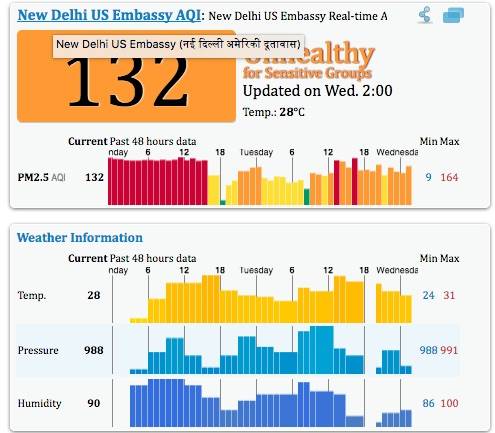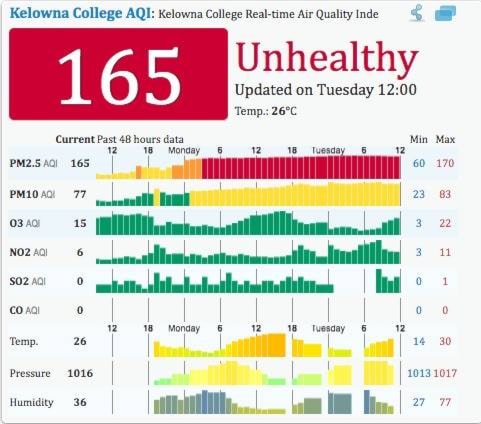Jenifer Calhoun doesn’t need the daily government updates about how poor the air quality has become.
She’s alerted to it with every breath her children take.
Her daughter Hailey, 3, has asthma and since the most recent wave of smoke rolled into the city, she’s gone through three inhalers in an effort to breathe a little easier.
Then there’s her seven-month-old son, who she’s been told has to stay indoors until the worst has passed.
“His breathing is a concern,” Calhoun said. “Right now he’s having a hard time and I have to take him to the doctor today.”
So they’re housebound and their view isn’t great. Usually from their vantage point in the Lower Mission, they could see the hillsides. Now they’re just looking at a wall of grey.
RELATED: NO END IN SIGHT TO FOREST FIRES
“Everybody is getting cabin fever,” she said. “They want to go outside, but the doctor advised we can’t so we’ve just been doing crafts… we can’t even take our dog for a walk.”
It’s not just the Calhoun family that’s suffering from the weight of smoky skies.
Infants, the elderly and people with health complications such as heart disease or asthma have been advised to stay indoors with the windows shut. Air conditioning and filters are considered a must, though they’re not improving conditions for everyone.
Michael Boyarski, district manager for BC Ambulance Services in the Central Okanagan said that there has been a significant jump in calls in the last month.
RELATED: LOWER MAINLAND SMOKE CAUSING A DEMAND IN HEALTH SERVICES
“The Central Okanagan saw an 11 per cent increase in call volume for the month of July when compared to the previous month,” Boyarski said, adding he can’t confirm the spike in calls is directly to do with air quality.
Provincial Health Officer Dr. Bonnie Henry did, however, make that connection in a Tuesday press conference addressing the current state of wildfires around the province.
“We do monitoring of trends over time and we look at how many people have doctors visits or prescriptions for medications,” Henry said.
“We have seen an increase of people who access medical care for respiratory conditions and that’s varied by time of day and different places across the province.”
Henry also said that air quality fluctuates greatly depending on the weather.
Real-time air pollution data collected by the World Air Quality Index project, pegged the air quality index in Kelowna at an “unhealthy” level on Friday, while Beijing was “good.”
Kelowna air on Tuesday was dirtier than New Delhi, which is renowned for its subpar air quality. It had an “unhealthy for sensitive groups” rating that day.
The difference, however, is the Central Okanagan is not suffering from poor air quality on a long term basis.

